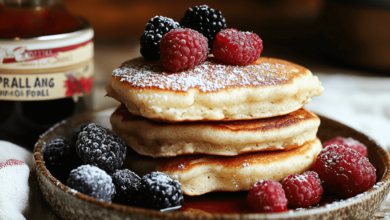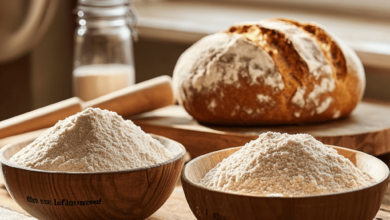

Introduction
“Can I substitute milk in recipes?” Whether you’re out of milk, lactose-intolerant, or simply looking for a dairy-free option, knowing how to swap milk without compromising taste or texture is essential. This guide explains the best milk substitutes for various recipes and tips to use them effectively.
1. Why Substitute Milk?
There are many reasons someone might need or want to substitute milk in their cooking or baking:
- Dietary Restrictions: Lactose intolerance or a dairy-free diet
- Allergies: Milk allergies can necessitate the use of alternatives
- Lifestyle Choices: Vegan diets or plant-based preferences
- Availability: Simply running out of milk and needing a quick substitute
2. Best Milk Substitutes for Cooking
- Almond Milk: A popular plant-based alternative, almond milk has a slightly nutty flavor and is low in calories. It’s best used in savory dishes, soups, and sauces.
- Soy Milk: With a protein content closest to cow’s milk, soy milk is a versatile substitute for cooking and works well in creamy dishes.
- Oat Milk: Oat milk has a naturally sweet and mild flavor, making it perfect for baking and pancakes.
- Coconut Milk: Canned coconut milk is rich and creamy, ideal for curries, soups, and desserts. It imparts a subtle coconut flavor, so consider this when choosing your recipes.
3. Best Milk Substitutes for Baking
- Buttermilk Substitute: Combine 1 cup of plant-based milk (e.g., soy or almond) with 1 tablespoon of vinegar or lemon juice. Let it sit for 5-10 minutes to create a tangy buttermilk replacement.
- Cashew Milk: Cashew milk is creamy with a neutral flavor, making it a great option for cakes and muffins.
- Rice Milk: Light and slightly sweet, rice milk works well in light baked goods like cookies and quick breads.
- Hemp Milk: An earthy-flavored substitute that adds a subtle nuttiness to baked items. It’s nutritious but can alter the taste slightly, so use it in recipes where this flavor is welcome.
4. Tips for Successful Substitution
- Adjust Sweetness: Some plant-based milks, like almond or oat, can come pre-sweetened. Be sure to adjust the sugar content in your recipe if needed.
- Texture Matters: For creamier results in sauces and baked goods, choose milk substitutes with higher fat content, like coconut or soy milk.
- Temperature Considerations: When using plant-based milk in hot recipes, gradually warm it to prevent curdling.
5. Dairy-Free Cream and Whipped Toppings
For recipes that require heavy cream or whipped topping:
- Coconut Cream: The thick cream from chilled canned coconut milk whips up nicely for a dairy-free whipped cream.
- Soy or Oat-Based Creams: Brands now offer soy or oat-based heavy cream substitutes perfect for soups, sauces, and desserts.
Conclusion
Substituting milk in recipes is easier than you might think! By choosing the right alternative based on your dish, you can maintain both taste and texture. Whether you’re cooking, baking, or whipping up a special treat, there’s a milk substitute that will fit your needs.
For more tips and kitchen guides, visit kuestion.co.



